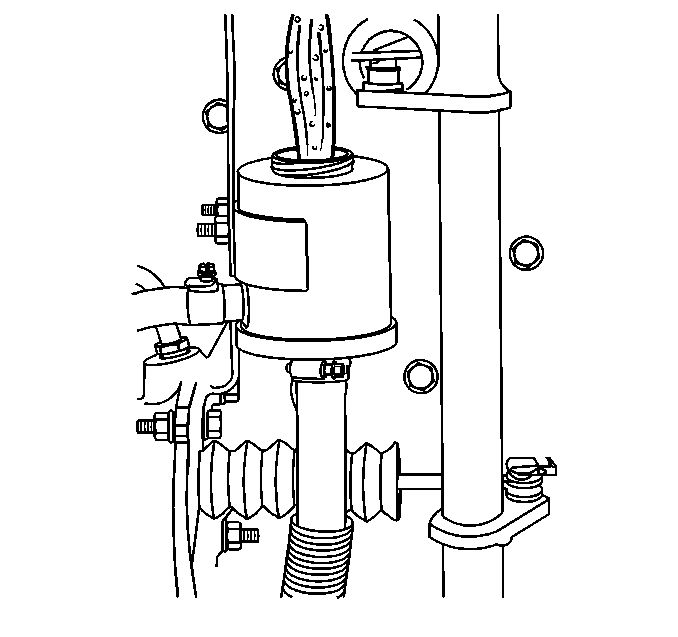Power Steering System Bleeding Process
Important:
| • | When a power steering pump or the gear has been removed or an
oil line has been disconnected, the air that has entered the system must be
bled out before the vehicle is operated. |
| • | If air is allowed to remain in the power steering fluid system,
noisy and unsatisfactory operation of the system may result. |
| • | When bleeding the system, and any time the fluid is added to the
power steering system, be sure to use only power steering fluid as specified
in
Fluid and Lubricant Recommendations
in Maintenance and Lubrication. |
- Make sure that the ignition switch is in the unlock position.
- Turn the steering wheel to the full left position.

- Fill the power steering
fluid reservoir to the FULL COLD level. Leave the cap off.
- Raise the vehicle using suitable safety stands.
- Place a drain pan under the vehicle to catch any power steering
fluid that may overflow.
- With an assistant checking fluid level and condition, turn the
steering wheel end-to-end at least 40 times.
| 6.1. | Clean off any overflow fluid from the outside of the reservoir
to allow for a proper leak check. This overflow is usually caused by trapped
air. |
| 6.2. | Maintain the fluid level at the FULL COLD level. |
| 6.3. | Check all power steering hose fittings for leaks if any air bubbles
are present. |
| 6.4. | Repair any leaks and repeat step 6. |
- Start the engine and allow it to idle. Maintain the power steering
fluid level at the FULL COLD level.
- Install the power steering reservoir cap.
- Return the front wheels to the straight ahead position.
- Lower the front wheels to the ground.
- Fully turn the steering wheel in both directions after allowing
the engine to idle for two minutes to verify the following:
| • | Proper fluid condition (no air bubbles, foam, or discoloration) |
- If any of the problems remain, refer to
Power Steering System Bleeding
which follows.
Power Steering System Bleeding Special Conditions
Foam or Bubbles in the Power Steering Fluid
The power steering fluid must be completely free of bubbles. Bubbles
in the fluid indicate a loose connection or a leaky O-ring seal.
Discolored Fluid (Milky, Opaque, or a Light Tan Color)
If the power steering fluid is discolored, wait two minutes, then recheck
the hose connections. Refer to
Power Steering System Bleeding
and repeat steps 7-11. If the conditions
exist, replace the O-ring seals and refer to
End Plate and Rotating Group Replacement
in Power Steering System.
Bleed the system.
Noise (Pump Whine or Groan)
With the engine running, check the hoses for possible contact with the
frame, body, or engine. Allow the system to cool down if no contact is found.
After cooling, restart the engine and allow it to idle for two minutes
to allow the system to come up to operating temperature. Replace the power
steering pump if noise is still present. Refer to
Power Steering Pump Replacement
and repeat the
bleeding procedure.

